Abstract
Severe pulmonary edema sometimes develops despite normal pulmonary capillary wedge pressure (Ppw). The equation describing net transvascular flux of lung liquid predicts decreased edema when hydrostatic pressure is reduced or when colloid osmotic pressure is increased in the pulmonary vessels. We tested these predictions in a model of pulmonary capillary leak produced in 35 dogs by intravenous oleic acid. 1 h later, the dogs were divided into five equal groups and treated for 4 h in different ways: (a) not treated, to serve as the control group (Ppw = 11.1 mm Hg); (b) given albumin to increase colloid osmotic pressure by 5 mm Hg (Ppw = 10.6 mm Hg); (c) ventilated with 10 cm H2O positive end-expiratory pressure (Peep) (transmural Ppw = 10.4 mm Hg); (d) phlebotomized to reduce Ppw to 6 mm Hg; (e) infused with nitroprusside, which also reduced Ppw to 6 mm Hg. Phlebotomy and nitroprusside reduced the edema in excised lungs by 50% (P< 0.001), but Peep and albumin did not affect the edema. Pulmonary shunt decreased on Peep and increased on nitroprusside, and lung compliance was not different among the treatment groups, demonstrating that these variables are poor indicators of changes in edema. Cardiac output decreased during the treatment period in all but the nitroprusside group, where Ppw decreased and cardiac output did not. We conclude that canine oleic acid pulmonary edema is reduced by small reductions in hydrostatic pressure, but not by increased colloid osmotic pressure, because the vascular permeability to liquid and protein is increased. These results suggest that low pressure pulmonary edema may be reduced by seeking the lowest Ppw consistent with adequate cardiac output enhanced by vasoactive agents like nitroprusside. Further, colloid infusions and Peep are not helpful in reducing edema, so they may be used in the lowest amount that provides adequate circulating volume and arterial O2 saturation on nontoxic inspired O2. Until these therapeutic principles receive adequate clinical trial, they provide a rationale for carefully monitored cardiovascular manipulation in treating patients with pulmonary capillary leak.
Full text
PDF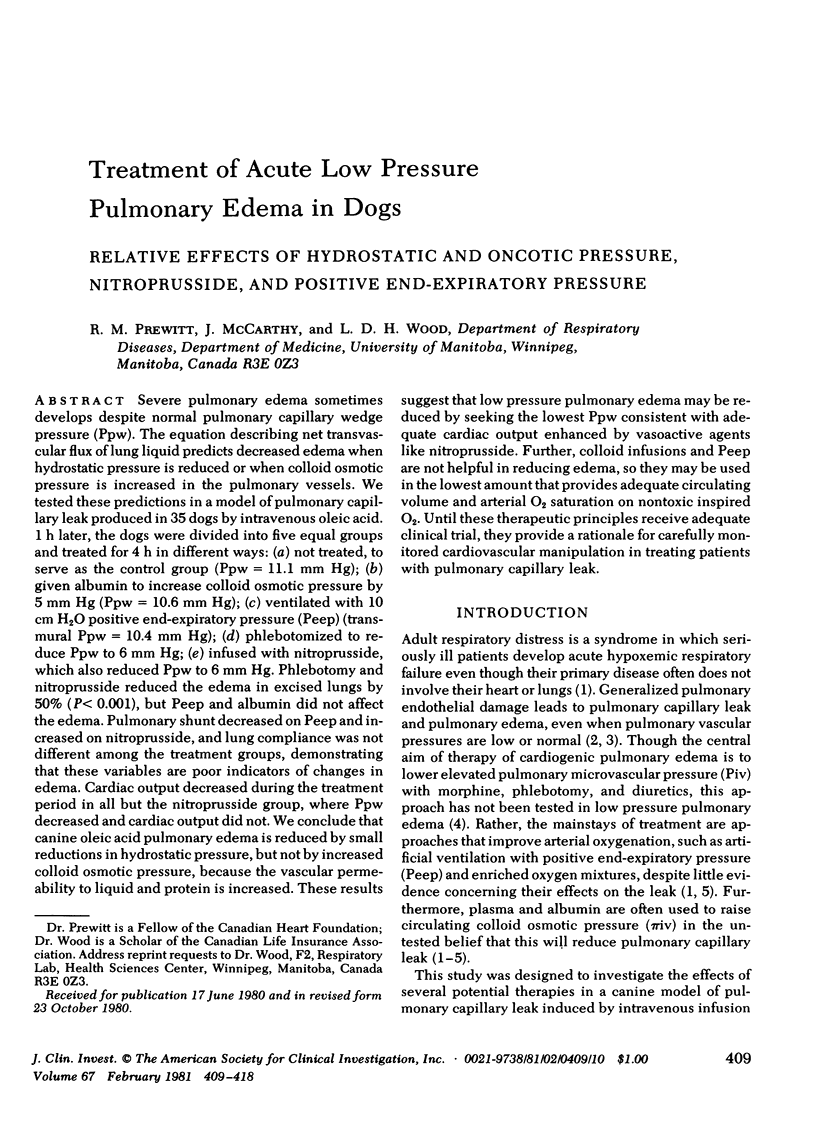
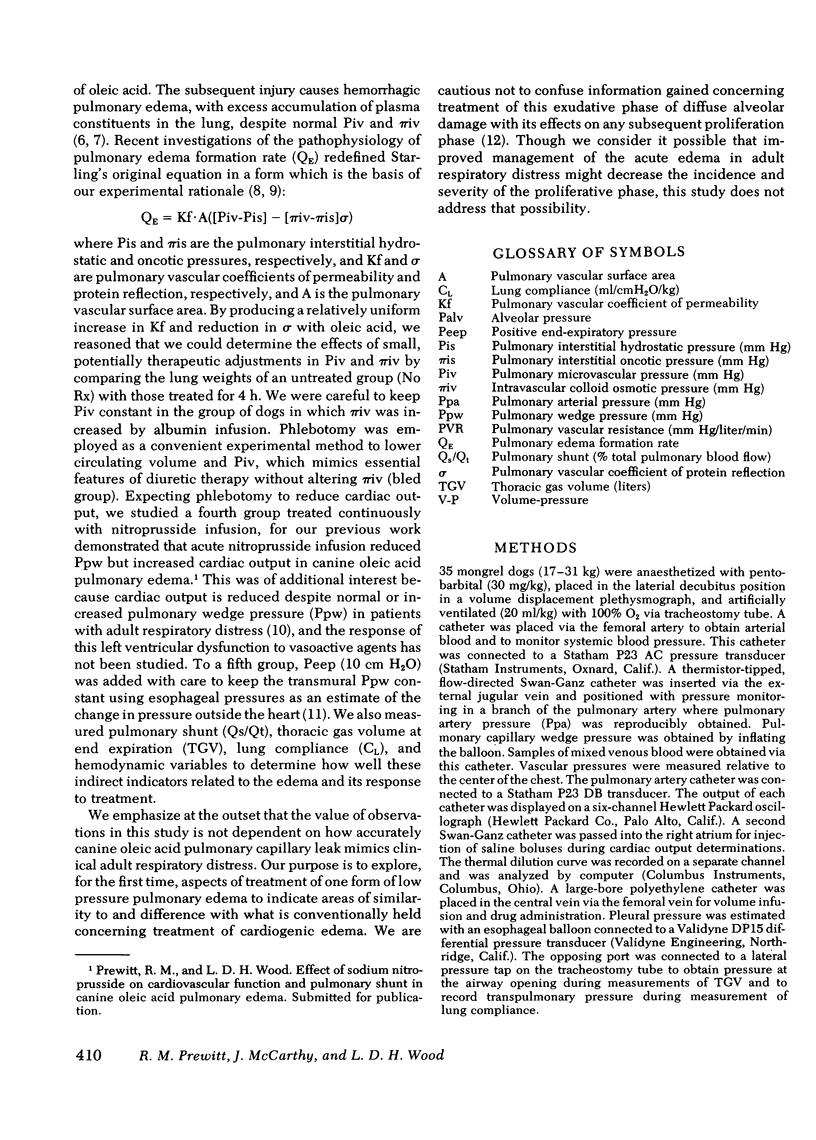
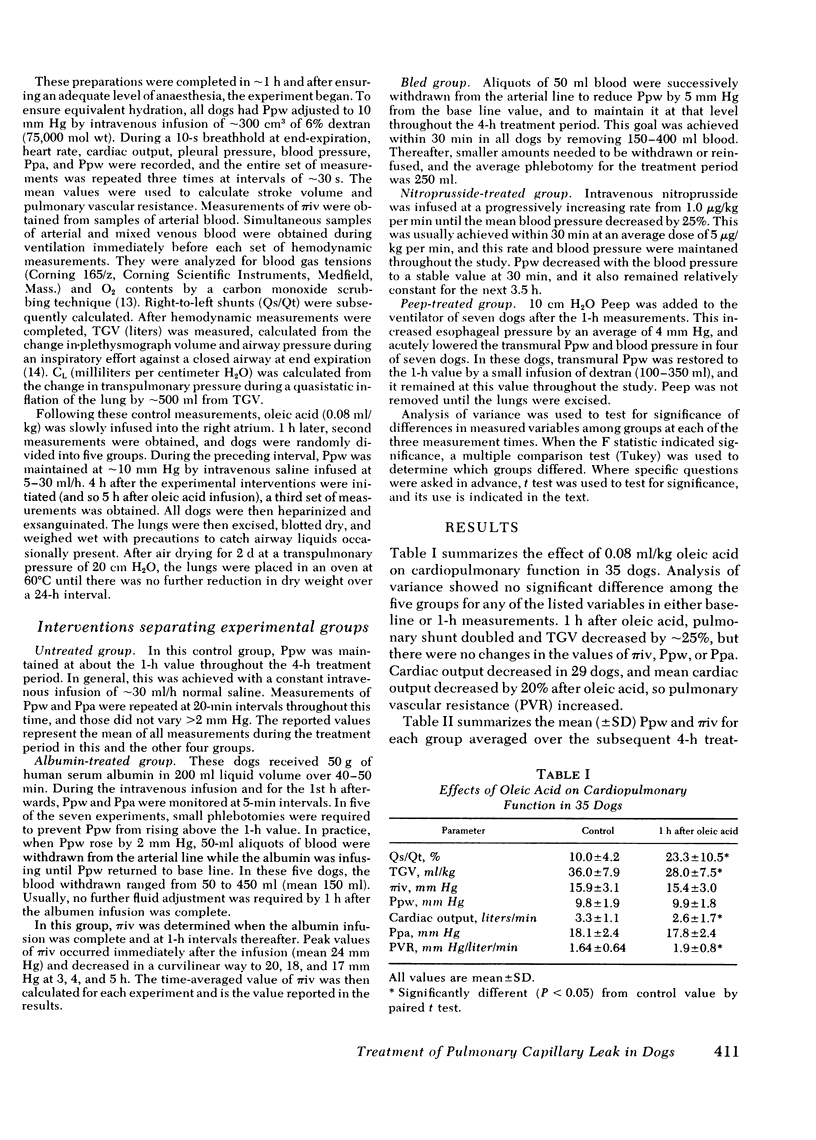
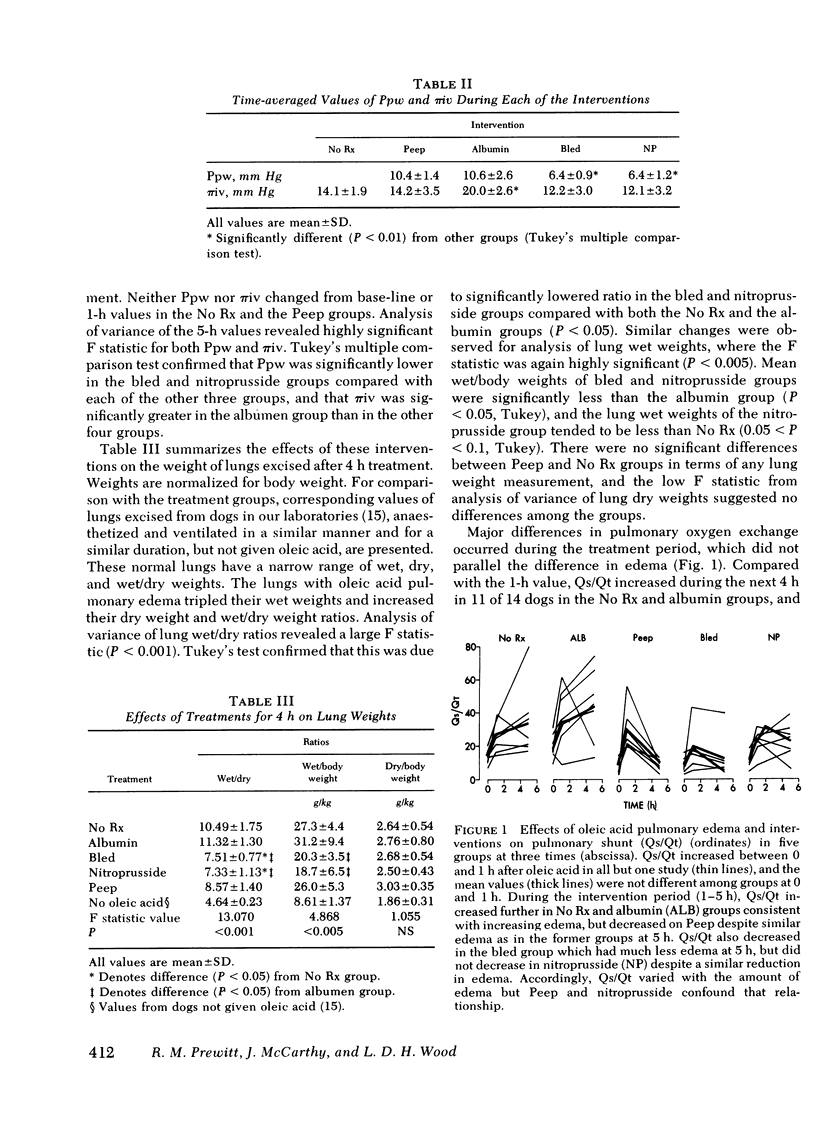
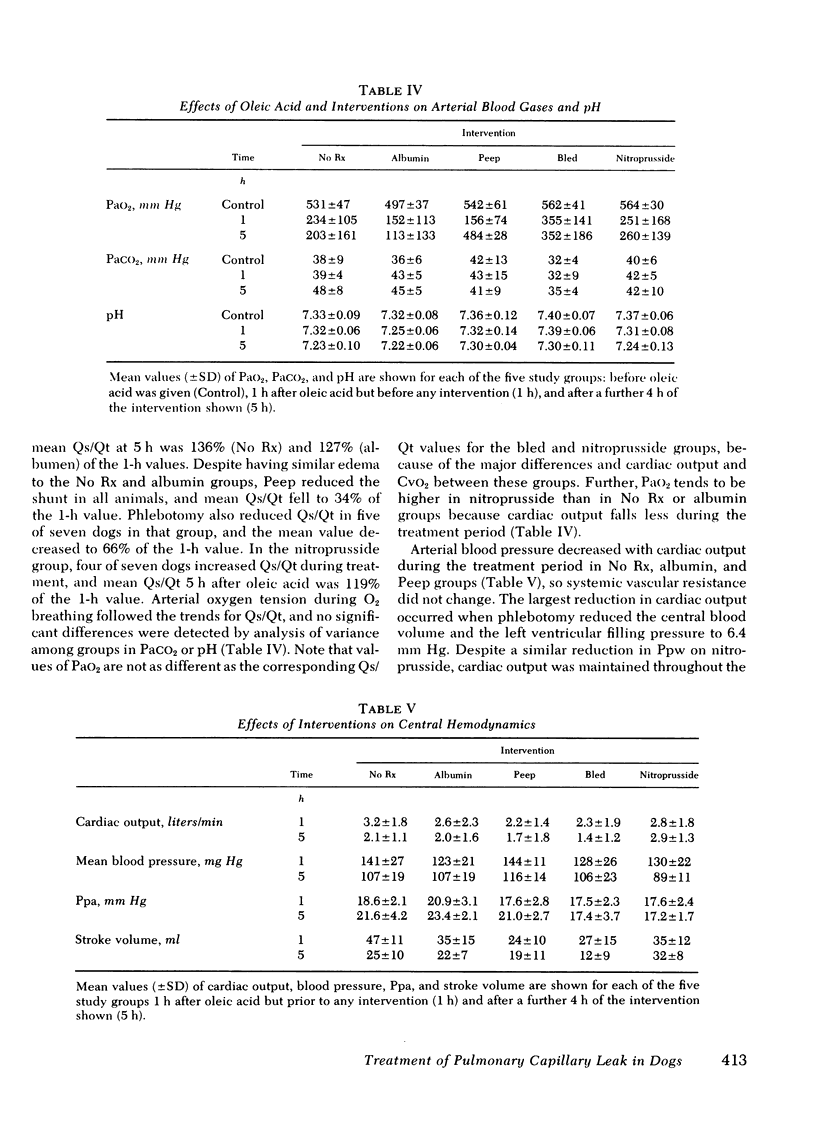
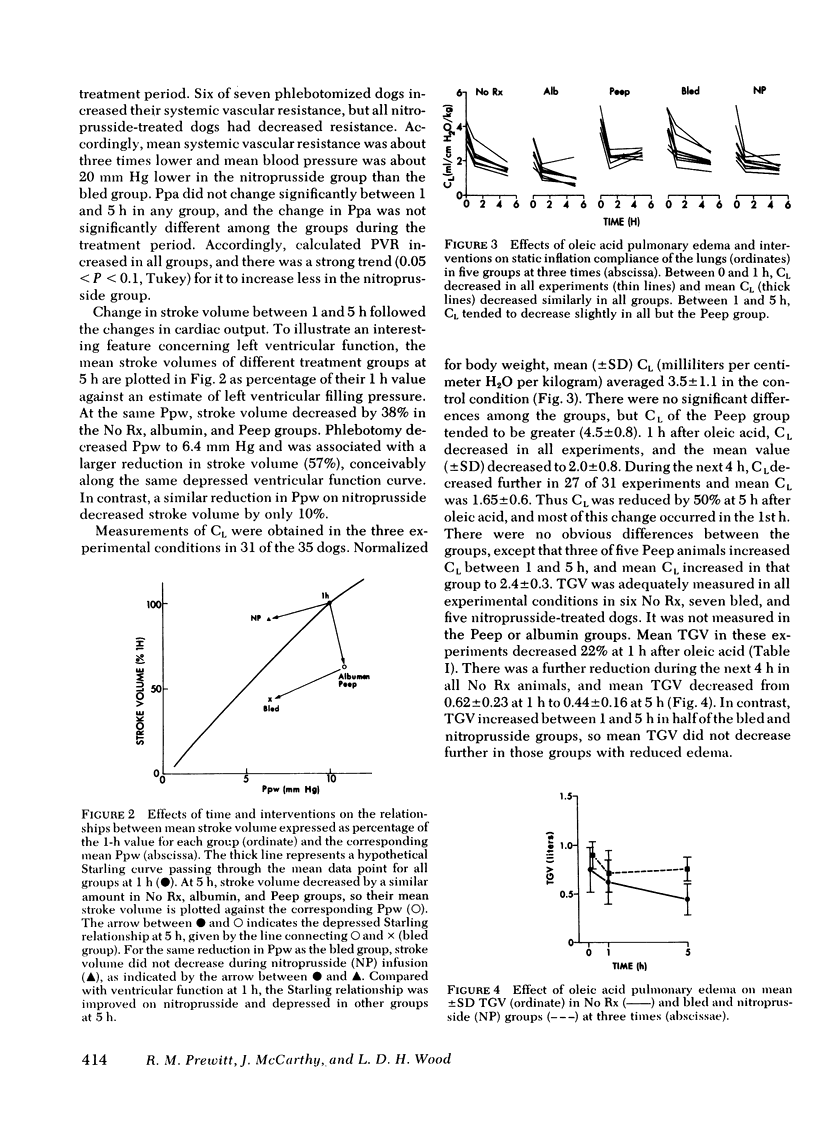
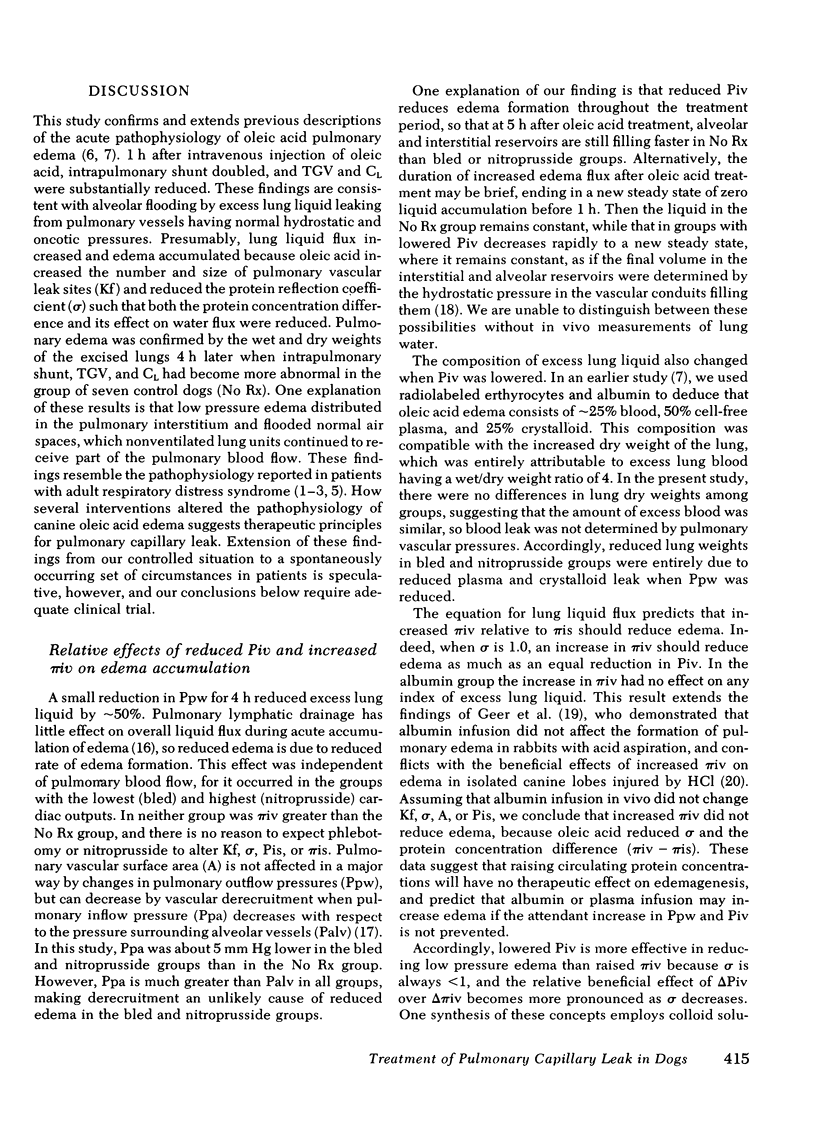
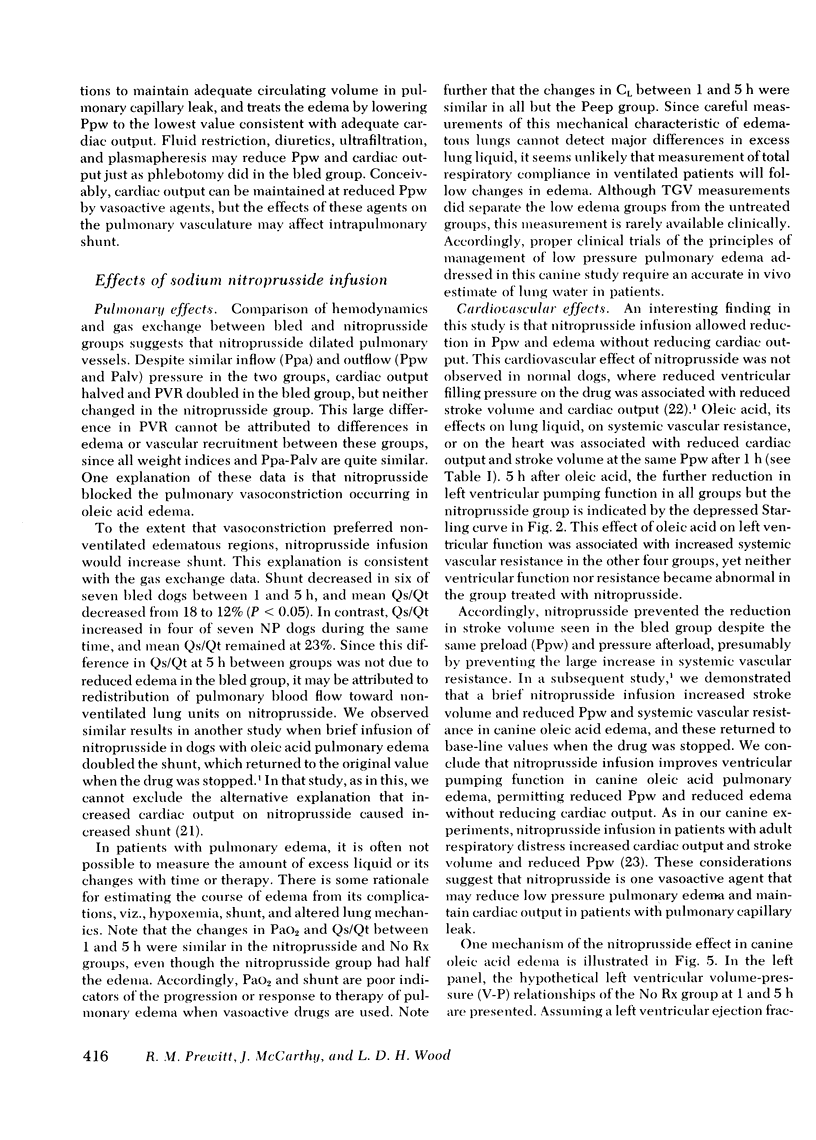
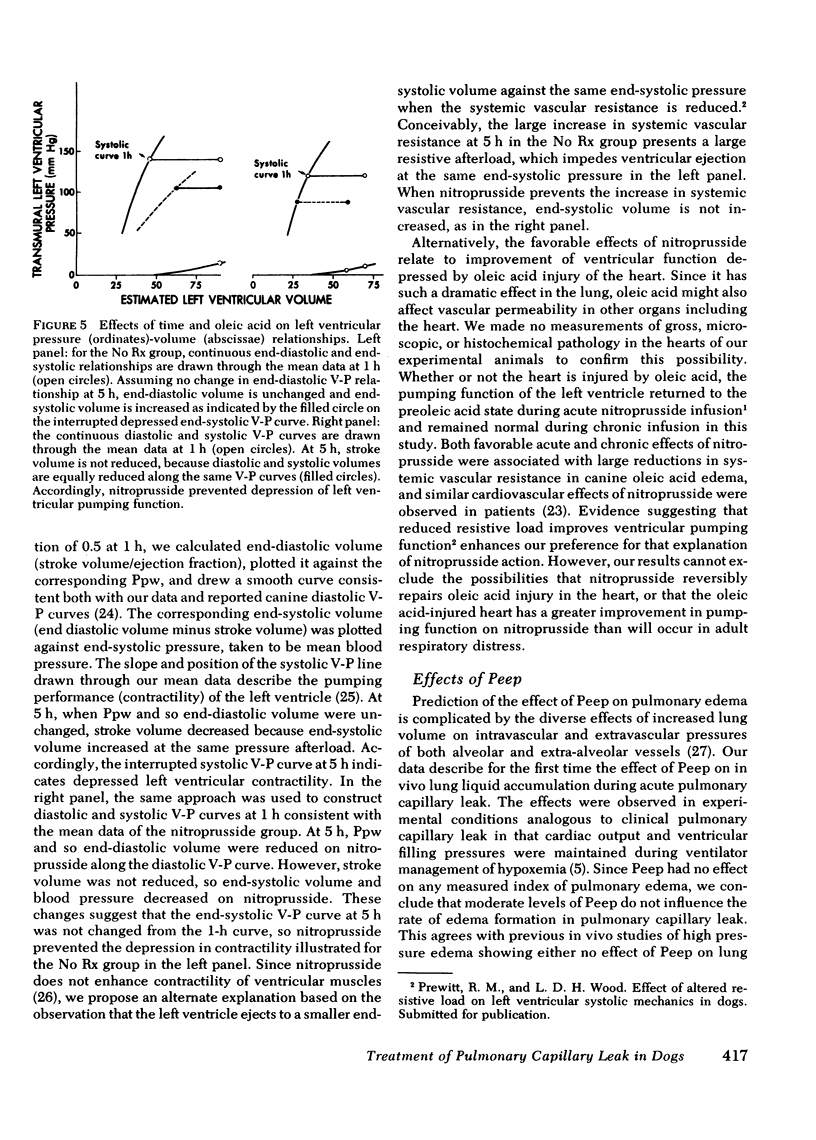
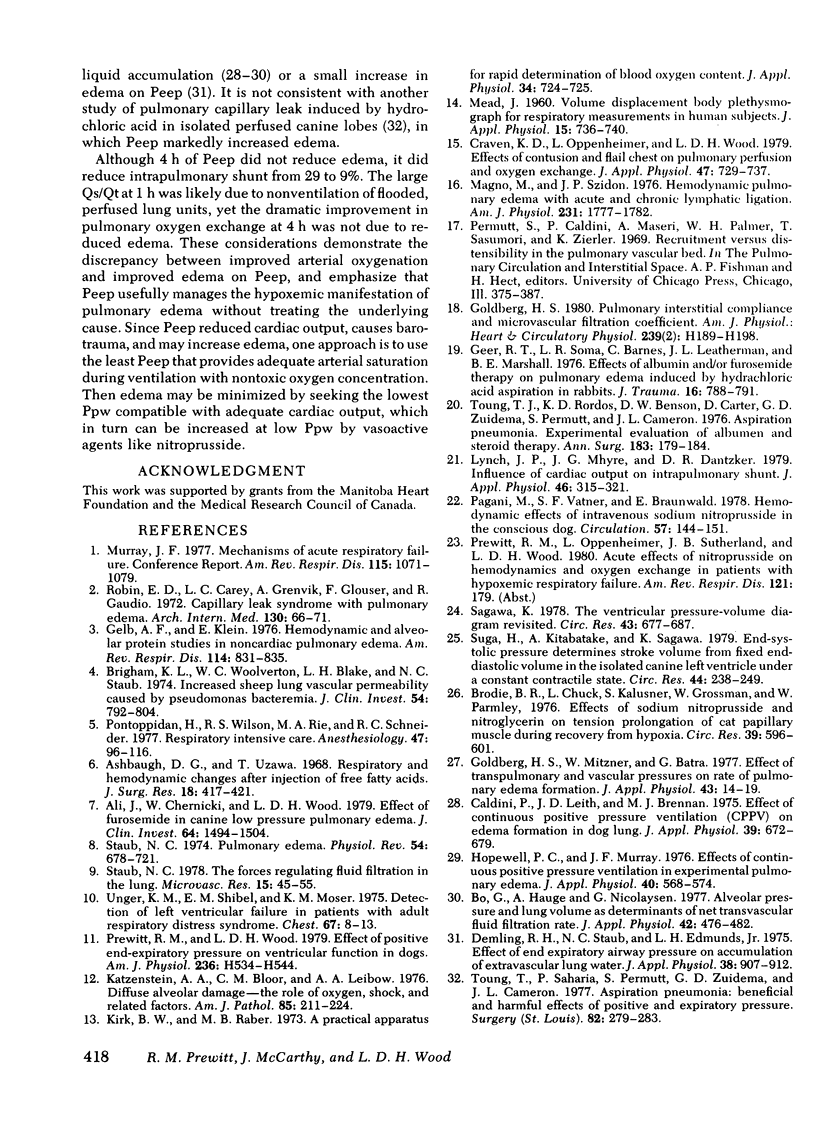
Selected References
These references are in PubMed. This may not be the complete list of references from this article.
- Ali J., Chernicki W., Wood L. D. Effect of furosemide in canine low-pressure pulmonary edema. J Clin Invest. 1979 Nov;64(5):1494–1504. doi: 10.1172/JCI109608. [DOI] [PMC free article] [PubMed] [Google Scholar]
- Ashbaugh D. G., Uzawa T. Respiratory and hemodynamic changes after injection of free fatty acids. J Surg Res. 1968 Sep;8(9):417–423. doi: 10.1016/0022-4804(68)90057-7. [DOI] [PubMed] [Google Scholar]
- Bo G., Hauge A., Nicolaysen G. Alveolar pressure and lung volume as determinants of net transvascular fluid filtration. J Appl Physiol Respir Environ Exerc Physiol. 1977 Apr;42(4):476–482. doi: 10.1152/jappl.1977.42.4.476. [DOI] [PubMed] [Google Scholar]
- Brigham K. L., Woolverton W. C., Blake L. H., Staub N. C. Increased sheep lung vascular permeability caused by pseudomonas bacteremia. J Clin Invest. 1974 Oct;54(4):792–804. doi: 10.1172/JCI107819. [DOI] [PMC free article] [PubMed] [Google Scholar]
- Brodie B. R., Cuck L., Klausner S., Grossman W., Parmley W. Effects of sodium nitroprusside and nitroglycerin on tension prolongation of cat papillary muscle during recovery from hypoxia. Circ Res. 1976 Oct;39(4):596–601. doi: 10.1161/01.res.39.4.596. [DOI] [PubMed] [Google Scholar]
- Caldini P., Leith J. D., Brennan M. J. Effect of continuous postive-pressure ventilation (CPPV) on edema formation in dog lung. J Appl Physiol. 1975 Oct;39(4):672–679. doi: 10.1152/jappl.1975.39.4.672. [DOI] [PubMed] [Google Scholar]
- Craven K. D., Oppenheimer L., Wood L. D. Effects of contusion and flail chest on pulmonary perfusion and oxygen exchange. J Appl Physiol Respir Environ Exerc Physiol. 1979 Oct;47(4):729–737. doi: 10.1152/jappl.1979.47.4.729. [DOI] [PubMed] [Google Scholar]
- Demling R. H., Staub N. C., Edmunds L. H., Jr Effect of end-expiratory airway pressure on accumulation of extravascular lung water. J Appl Physiol. 1975 May;38(5):907–912. doi: 10.1152/jappl.1975.38.5.907. [DOI] [PubMed] [Google Scholar]
- Geer R. T., Soma L. R., Barnes C., Leatherman J. L., Marshall B. E. Effects of albumin and/or furosemide therapy on pulmonary edema induced by hydrochloric acid aspiration in rabbits. J Trauma. 1976 Oct;16(10):788–791. doi: 10.1097/00005373-197610000-00006. [DOI] [PubMed] [Google Scholar]
- Gelb A. F., Klein E. Hemodynamic and alveolar protein studies in noncardiac pulmonary edema. Am Rev Respir Dis. 1976 Nov;114(5):831–835. doi: 10.1164/arrd.1976.114.5.831. [DOI] [PubMed] [Google Scholar]
- Goldberg H. S., Mitzner W., Batra G. Effect of transpulmonary and vascular pressures on rate of pulmonary edema formation. J Appl Physiol Respir Environ Exerc Physiol. 1977 Jul;43(1):14–19. doi: 10.1152/jappl.1977.43.1.14. [DOI] [PubMed] [Google Scholar]
- Hopewell P. C., Murray J. F. Effects of continuous positive-pressure ventilation in experimental pulmonary edema. J Appl Physiol. 1976 Apr;40(4):568–574. doi: 10.1152/jappl.1976.40.4.568. [DOI] [PubMed] [Google Scholar]
- Kirk B. W., Raber M. B. A practical apparatus for rapid determination of blood oxygen content. J Appl Physiol. 1973 May;34(5):724–725. doi: 10.1152/jappl.1973.34.5.724. [DOI] [PubMed] [Google Scholar]
- Lynch J. P., Mhyre J. G., Dantzker D. R. Influence of cardiac output on intrapulmonary shunt. J Appl Physiol Respir Environ Exerc Physiol. 1979 Feb;46(2):315–321. doi: 10.1152/jappl.1979.46.2.315. [DOI] [PubMed] [Google Scholar]
- Magno M., Szidon J. P. Hemodynamic pulmonary edema in dogs with acute and chronic lymphatic ligation. Am J Physiol. 1976 Dec;231(6):1777–1782. doi: 10.1152/ajplegacy.1976.231.6.1777. [DOI] [PubMed] [Google Scholar]
- Murray J. C., Lindberg K. A., Pinnell S. R. In vitro inhibition of chick embryo lysyl hydroxylase by homogentisic acid. A proposed connective tissue defect in alkaptonuria. J Clin Invest. 1977 Jun;59(6):1071–1079. doi: 10.1172/JCI108730. [DOI] [PMC free article] [PubMed] [Google Scholar]
- Pagani M., Vatner S. F., Braunwald E. Hemodynamic effects of intravenous sodium nitroprusside in the conscious dog. Circulation. 1978 Jan;57(1):144–151. doi: 10.1161/01.cir.57.1.144. [DOI] [PubMed] [Google Scholar]
- Pontoppidan H., Wilson R. S., Rie M. A., Schneider R. C. Respiratory intensive care. Anesthesiology. 1977 Aug;47(2):96–116. doi: 10.1097/00000542-197708000-00003. [DOI] [PubMed] [Google Scholar]
- Prewitt R. M., Wood L. D. Effect of positive end-expiratory pressure on ventricular function in dogs. Am J Physiol. 1979 Apr;236(4):H534–H544. doi: 10.1152/ajpheart.1979.236.4.H534. [DOI] [PubMed] [Google Scholar]
- Robin E. D., Carey L. C., Grenvik A., Glauser F., Gaudio R. Capillary leak syndrome with pulmonary edema. Arch Intern Med. 1972 Jul;130(1):66–71. [PubMed] [Google Scholar]
- Sagawa K. The ventricular pressure-volume diagram revisited. Circ Res. 1978 Nov;43(5):677–687. doi: 10.1161/01.res.43.5.677. [DOI] [PubMed] [Google Scholar]
- Staub N. C. Pulmonary edema. Physiol Rev. 1974 Jul;54(3):678–811. doi: 10.1152/physrev.1974.54.3.678. [DOI] [PubMed] [Google Scholar]
- Staub N. C. The forces regulating fluid filtration in the lung. Microvasc Res. 1978 Jan;15(1):45–55. doi: 10.1016/0026-2862(78)90004-3. [DOI] [PubMed] [Google Scholar]
- Suga H., Kitabatake A., Sagawa K. End-systolic pressure determines stroke volume from fixed end-diastolic volume in the isolated canine left ventricle under a constant contractile state. Circ Res. 1979 Feb;44(2):238–249. doi: 10.1161/01.res.44.2.238. [DOI] [PubMed] [Google Scholar]
- Toung T. J., Bordos D., Benson D. W., Carter D., Zuidema G. D., Permutt S., Cameron J. L. Aspiration pneumonia: experimental evaluation of albumin and steroid therapy. Ann Surg. 1976 Feb;183(2):179–184. doi: 10.1097/00000658-197602000-00016. [DOI] [PMC free article] [PubMed] [Google Scholar]
- Toung T., Saharia P., Permutt S., Zuidema G. D., Cameron J. L. Aspiration pneumonia: beneficial and harmful effects of positive end-expiratory pressure. Surgery. 1977 Aug;82(2):279–283. [PubMed] [Google Scholar]
- Unger K. M., Shibel E. M., Moser K. M. Detection of left ventricular failure in patients with adult respiratory distress syndrome. Chest. 1975 Jan;67(1):8–13. doi: 10.1378/chest.67.1.8. [DOI] [PubMed] [Google Scholar]


